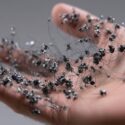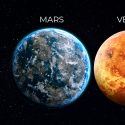Visitors from beyond the stars have arrived. What secrets could our intergalactic friends share?
What wonders could these space chums unveil? They DO NOT come in peace.
The aliens have arrived, and they’re here to lay down the law. Humans are no longer at the top of the food chain, and we’re now at the mercy of our alien overlords.
What would our new alien masters do with us? And why did they invade Earth?
For centuries, humans have been calling the shots on Earth. Just ask the animals we use as food, keep in zoos, hunt for sport, or even have around the house as pets.
We’re in for quite the shock when our new intergalactic masters show up – and give us a taste of our own medicine.
What, exactly, would they do to us? Well, we may become the new animals.
We’d be treated as a commodity to be bought, traded and sold. And if these aliens are anything like we are, we’d also be their lunch.
Human cells are made up of proteins, nucleic acids and membranes. If the aliens had the same basic biochemistry as us, they would be able to convert our tasty, nourishment-filled bodies into energy for themselves.
In China alone, the pork industry is worth $128 billion (U.S.), and has 433 million pigs ready to barbecue. To an alien food connoisseur, would we be just as tasty?
Human burger, anyone? What if we were seen as a delicacy to be distributed across the Universe? Even to us, body parts are a hot commodity.
A heart is $1.4 million to transplant, and $119,000 on the open market. Kidneys are around the $200,000 mark. Livers are $157,000, and bone marrow is $23,000/gram (0.03 oz).
We’re dealing with human economics here, but this idea can be applied to the concept that we are Earth’s new cattle. We’re a living organism that might be sold to something. Somewhere. In space.
But what if the aliens didn’t think we were delicious? What if they thought we were … cute? Well, in the U.S., there are nearly 70 million dogs being kept as pets, and 74 million cats. Brazil also has 191 million feathered best friends. Would the aliens keep us as pets?
Or, even worse, what if they kept us in captivity and gawked at us? You know, kind of like we do with zoos.
There are approximately 6,000 species in zoos around the world. About 8,000,000 animals in total. The aliens may not have as much variety in human zoos, but we sure are an entertaining bunch.
Imagine a group of alien children on a school trip, watching you in your natural habitat. See, children? lectures the alien headmistress.
So, there’s not a lot to look forward to. But it makes us think about what the aliens would get out of Earth in the first place.
Well, Earth looks like quite a nice place to set up shop – on paper. Earth has plate tectonics that help to keep the climate stable, a global magnetic field that keeps solar winds from getting close, and the added bonus of a moon that stops Earth from wobbling on its axis too much.
That combination would look appealing to the aliens, and it’s something they might have a difficult time finding anywhere else. And what about us?
Well, we already know we’d not only be delicious, but profitable. With the aliens having a monopoly on the human market, they could start making more rewarding changes to their new home.
Considering they’re intelligent enough to travel light-years to get here, how hard could it be to redevelop a planet? The truth is, we don’t know for sure what the aliens’ plans would be. This is only one of several scenarios that could happen if we faced an alien invasion.
What if the aliens are already planning to head our way? Surveying the land and getting to know these strange humans who call Earth home?
Subscribe to What-If on YouTube or follow the show on Facebook Watch.
Sources
- “Maslow’s Hierarchy of Needs Explained”. Elizabeth Hopper, 2020. Thoughtco. Accessed February 3 2020.
- “Domestication”. Society, National. 2011. National Geographic Society. Accessed February 3 2020.
- “A Guide to Worldwide Pet Ownership”. 2015. Petsecure. Accessed February 3 2020.
- “Why Would Aliens Even Bother with Earth?”. Lewis Dartnell, 2017. Literary Hub. Accessed February 3 2020.
- “Ch 7: Enantiomers”. 2020. chem.ucalgary.ca. Accessed February 3 2020.
- “Here’s What All Your Organs And Parts Are Worth On The Black Market”. Taylor, April. 2020. Ranker. Accessed February 3 2020.
- “Pork Facts | National Pork Producers Council”. 2020. nppc.org. Accessed February 3 2020.



























